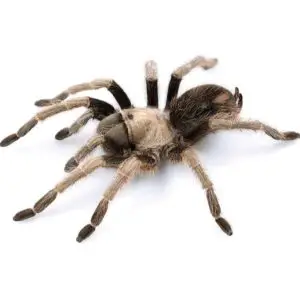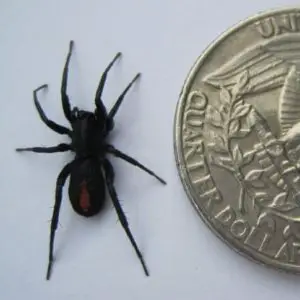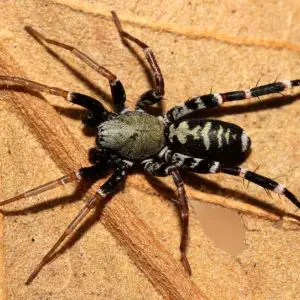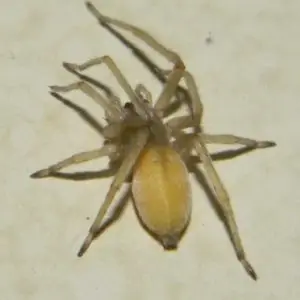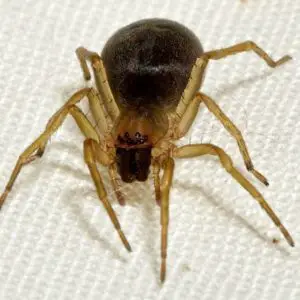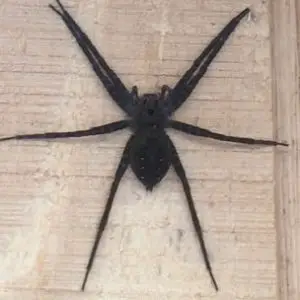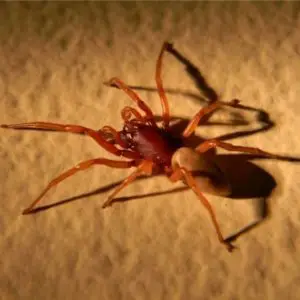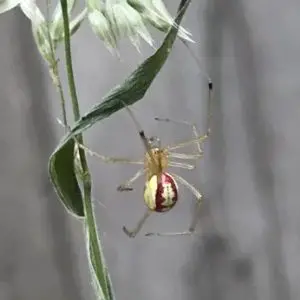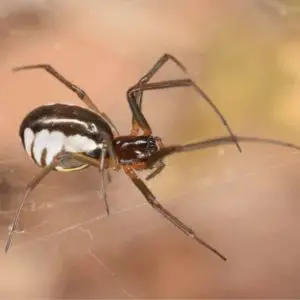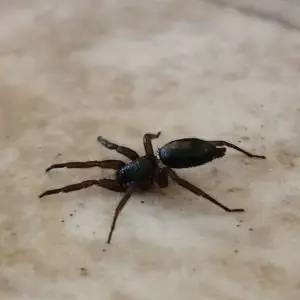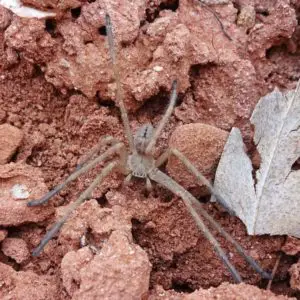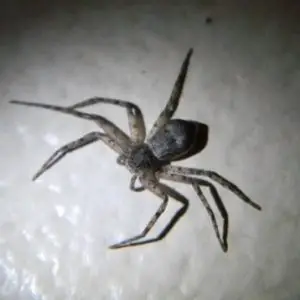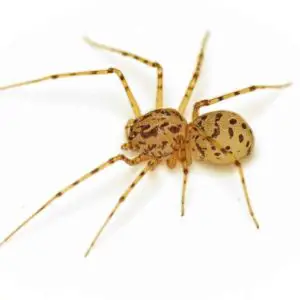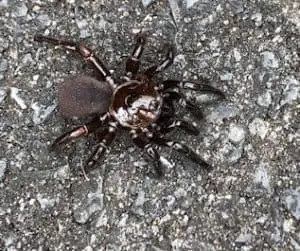Even just the sight or the thought of a spider triggers panic and nightmares for many people. Even though almost all spiders around the world are absolutely harmless. And that is even more true for spiders in Oregon. There are almost 1,000 different spider species found in the Pacific Northwest. This page provides and overview of the most common spiders in Oregon, gives you identification tips and helps you identify potentially dangerous spiders in Oregon.
So let’s dive right in:
Poisonous Spiders in Oregon
While technically almost all spider species in the world are considered venomous (not poisonous), there is only one single spider species in Oregon that is considered medically significant: the western black widow (Latrodectus hesperus).
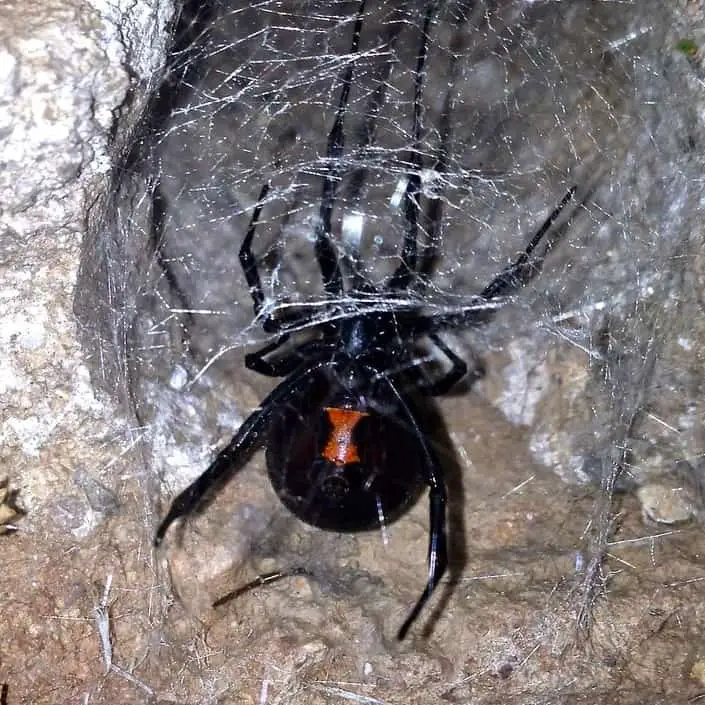
The western black widow is a medium-sized spider with a large and round abdomen. The spider is almost completely black and shiny with a red-hourglass shape on the bottom of its abdomen. Some male and juvenile spiders also have red or white markings on their backs.
In Oregon, the black widow is rarely found in Portland and Northwestern Oregon. While black widows are generally a rare sight in Oregon, the majority of their population is found in Eastern Oregon, east of the Cascades Mountain Range and in Southwestern Oregon around Medford. While being very rare in the Northwest, black widows are sometimes also seen in the Portland area, more often in the Willamette Valley.
Many alleged sightings of black widows are actually similar-looking false black widows (Steatoda grossa). This spider has a similar shape and overall appearance but doesn’t have any red markings on its body. Sometimes, their overall body color appears brown-black or purple-black while the black widow’s primary color is dark black. Click below to learn more about the western black widow:
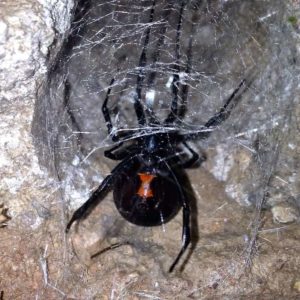
Latrodectus Hersperus – Western Black Widow
What about the brown recluse in Oregon?
Potentially dangerous spiders have fascinated people and news outlets ever since they appeared. Most of us have heard or read stories of someone who allegedly saw a brown recluse in Oregon. And that is true for any U.S. State, regardless of how far out of the natural range that may be.
The truth is that the range of the infamous brown recluse is nowhere near the borders or Oregon. Recluse spiders prefer warm and arid habitats and the Chilean recluse spider can be found as far up north as San Francisco. And that is still a long way to Oregon.
So our answer is: No, you don’t need to worry about brown recluse spiders in Oregon. While very few sightings have been confirmed, those are individual cases or recluses having been imported on cargo or cars into the state. However, due to the climate conditions, they have failed (and will, for the foreseeable future) to establish a population.
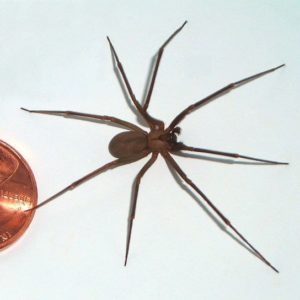
Loxosceles reclusa – Brown Recluse
What about the hobo spider?
Another myth about poisonous spiders in Oregon is the fact that the hobo spider (Eratigena agrestis) is deadly and aggressive. While this was popular belief up to around 30 years ago, it is now proven that hobo spiders do not pose a threat for humans or larger pets. At least no more than other harmless spiders. A bite might still cause some swellings and may be uncomfortable but it is unlikely to cause any serious harm.
While the hobo spider is very common around and in Oregon homes, there is also no evidence that it is any more aggressive than any other spider. Spiders are well aware that their tiny teeth (fangs) will not protect them from something like an approaching human. Therefore, they rather escape when we approach than attack. And that is true for the hobo spider as well.
You can read more about the hobo spider here:
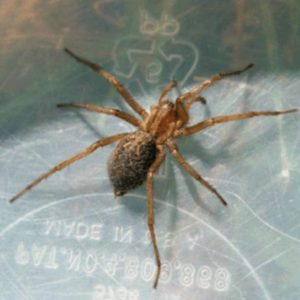
Eratigena Agrestis – Hobo Spider
Common house spiders in Oregon
The giant house spider (Eratigena atrica) is the largest spider in Oregon. Adult females can reach a total leg span of up to 3 inches (75 mm). The giant house spider is the most common spider in and around homes in the Pacific Northwest. It is a close relative and look-alike of the hobo spider and therefore often mis-identified. The giant house spider is a large brown spider and often also confused with the common wolf spider in Oregon.
While the giant house spider, the wolf spider and the hobo spider are the largest spiders often found inside homes, most house spiders in Oregon are smaller and often live among us without us noticing them. Some spiders commonly found inside in Oregon are the gray house spider (Badumna longinqua), an invasive species imported from Australia (harmless, though), false widow spiders (Steatoda), the common house spider (Parasteatoda tepidariorum) as well as jumping spiders. You can scroll through the list below and click on any image or heading to learn more about each spider. Below you can find more images and information about Oregon spiders.
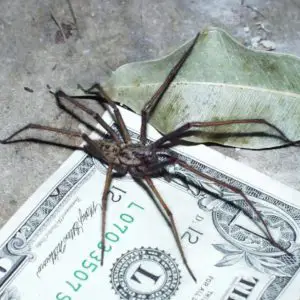
Eratigena Atrica – Giant House Spider
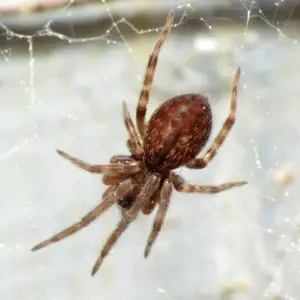
Gray House Spider – Badumna Longinqua
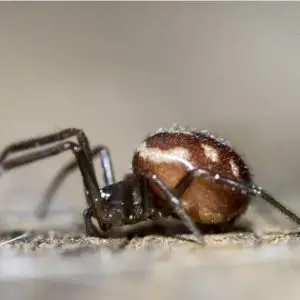
Steatoda Grossa – False Black Widow Spider

Eratigena Agrestis – Hobo Spider
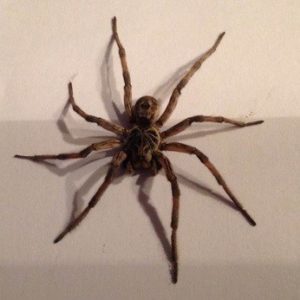
Lycosidae – Wolf Spider
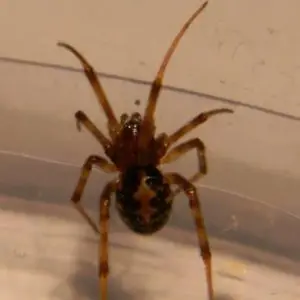
Steatoda Triangulosa – Triangulate Cobweb Spider
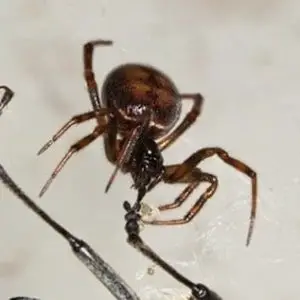
Steatoda Bipunctata – Rabbit Hutch Spider
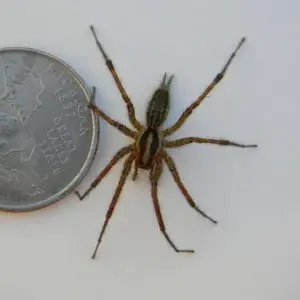
Agelenopsis – American Grass Spider
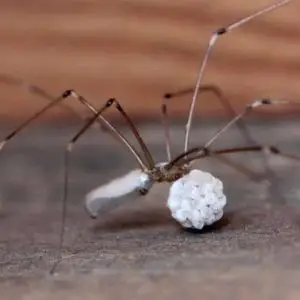
Pholcidae – Daddy Long-Legs or Cellar Spider
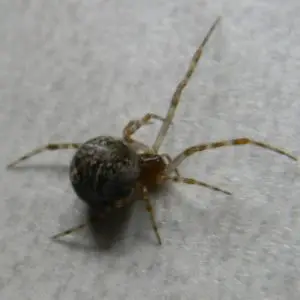
Parasteatoda tepidariorum – The Common House Spider
Jumping spiders
Jumping spiders are small to medium-sized spiders with the ability to jump. They are part of the spider family of Salticidae. There are almost 400 species of jumping spiders in the United States and many of them can also be found in Oregon. Jumping spiders are characterized by their large eyes and are spiders with excellent vision. They are able to clearly focus on nearby objects so that they can perfectly calculate their jumps. The most common jumping spiders in Oregon are the zebra jumping spider, the daring jumping spider and the red-backed jumping spider.
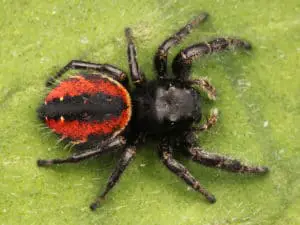
Phidippus Johnsoni – Red-Backed Jumping Spider
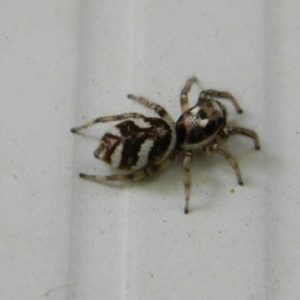
Salticus Scenicus – Zebra Spider
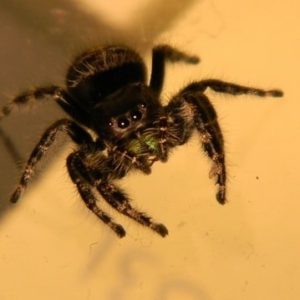
Phidippus audax – Daring Jumping Spider
Common Garden spiders and orb weavers found in Oregon
Especially in autumn, the gardens fill up with green, yellow, white and red spiders in Oregon. Some of them spin large orb-shaped webs to catch flying insects. These are orb weaver spiders. Other common garden spiders are crab spiders.
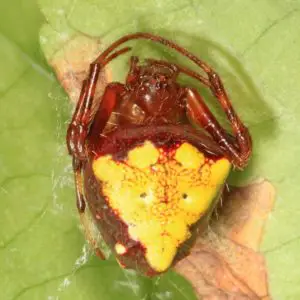
Verrucosa Arenata – Arrowhead Spider
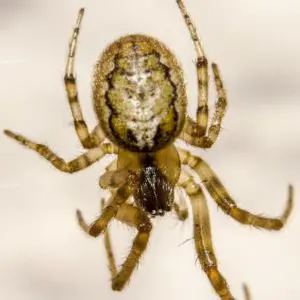
Missing Sector Orb Weaver – Zygiella X-Notata
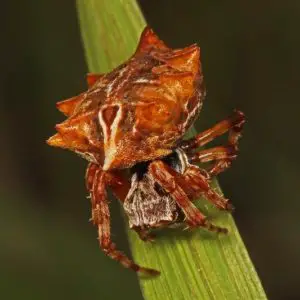
Acanthepeira Stellata – Starbellied Orb Weaver
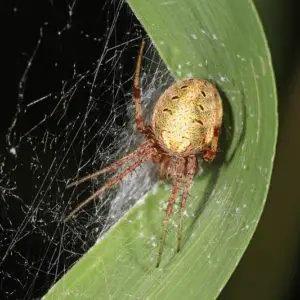
Neoscona Arabesca – Arabesque Orb Weaver
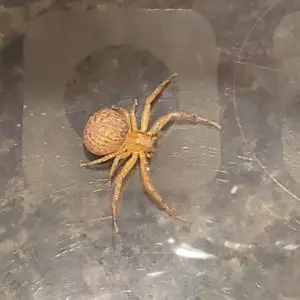
Xysticus Funestus – Deadly Ground Crab Spider
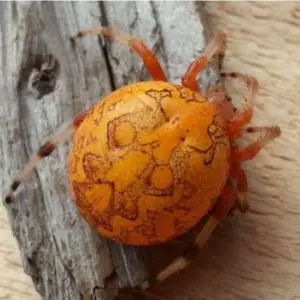
Araneus Marmoreus – Marbled Orb Weaver
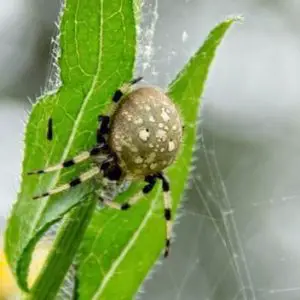
Araneus Trifolium – Shamrock Spider
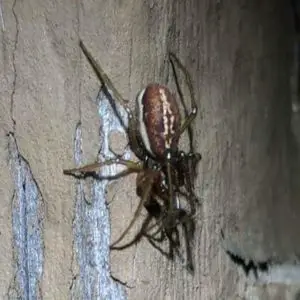
Pachygnatha
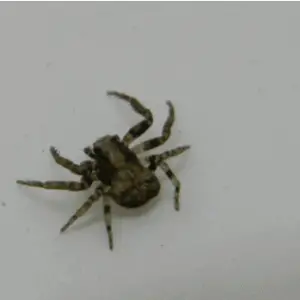
Xysticus – Ground Crab Spider
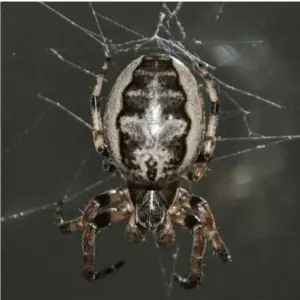
Larinioides Cornutus – Furrow Spider
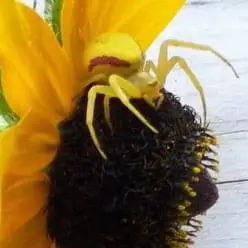
Misumena – Flower Crab Spider
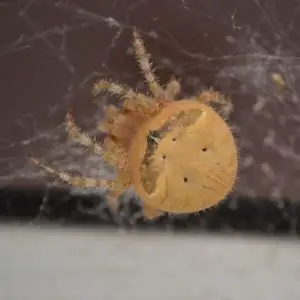
Araneus Gemmoides – Cat-Faced Spider or Jewel Spider
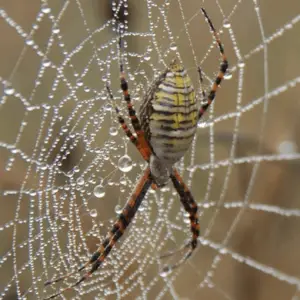
Argiope Trifasciata – Banded Garden Spider
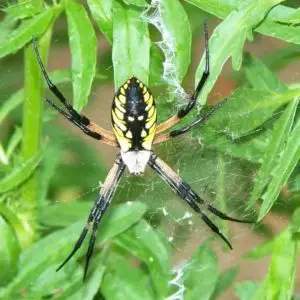
Argiope Aurantia – Black and Yellow Garden Spider
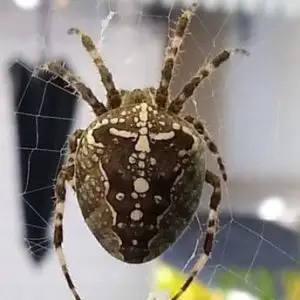
Araneus diadematus – The European Garden Spider
Other common spiders in Oregon
Large spiders found in Oregon are huntsman spiders, mouse spiders, which are found in eastern, central and southern Oregon as well as fishing spiders (Dolomedes sp.). Check out the images here to identify your spider and click to learn more:
Spider Identification Oregon
If you have found a spider in Oregon that is not on our list, or that you could not identify, check out our spider identification tool. Just answer a few questions and the tool will give you a few recommendations what spider you could be looking at. If that doesn’t help either, just submit a comment with a picture of your spider on our spider identification page and we will do our best to identify the Oregon spider for you – for free, of course. Check out the spider identification tool now.

